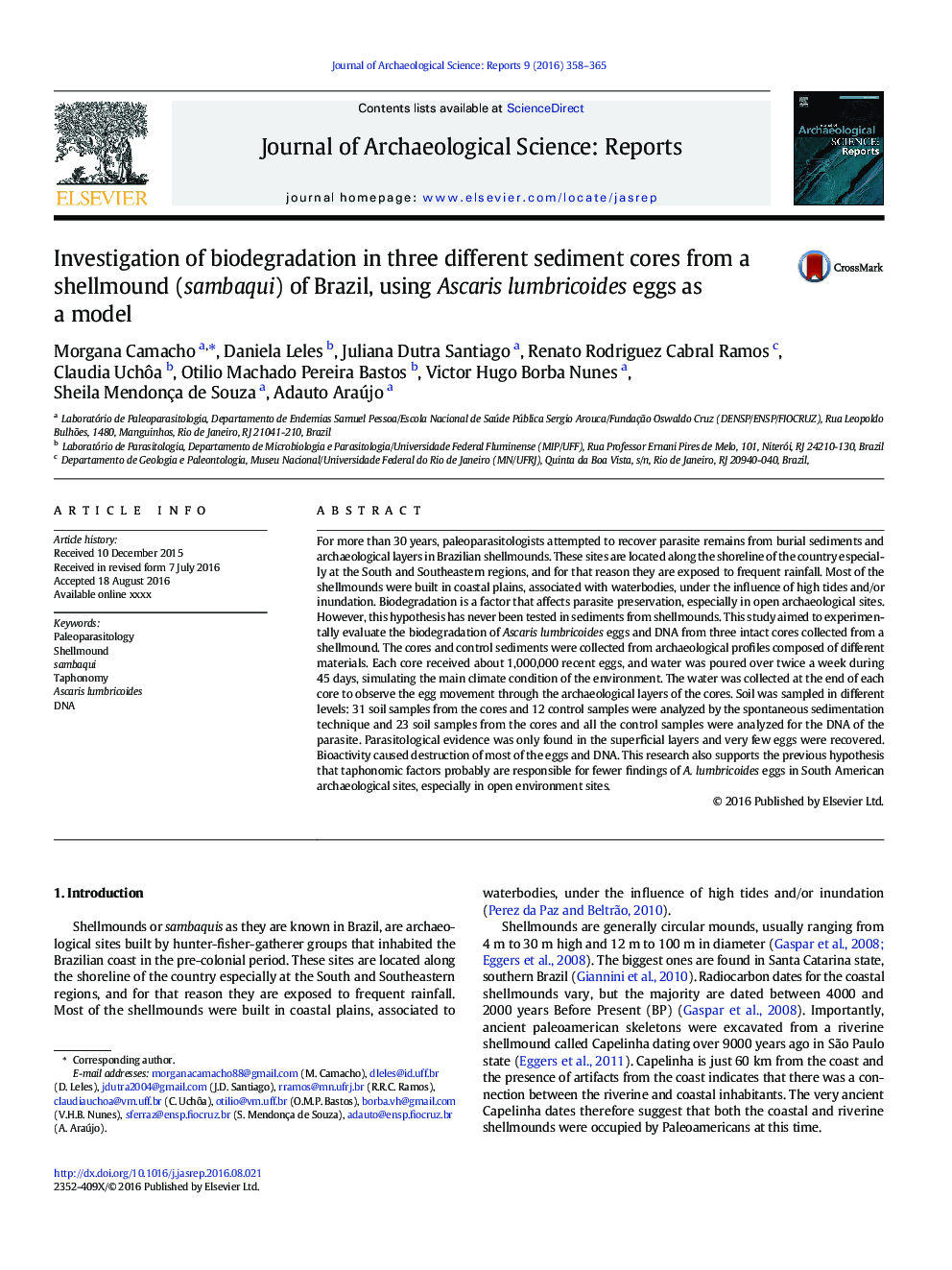| کد مقاله | کد نشریه | سال انتشار | مقاله انگلیسی | نسخه تمام متن |
|---|---|---|---|---|
| 7445482 | 1483934 | 2016 | 8 صفحه PDF | دانلود رایگان |
عنوان انگلیسی مقاله ISI
Investigation of biodegradation in three different sediment cores from a shellmound (sambaqui) of Brazil, using Ascaris lumbricoides eggs as a model
دانلود مقاله + سفارش ترجمه
دانلود مقاله ISI انگلیسی
رایگان برای ایرانیان
کلمات کلیدی
موضوعات مرتبط
علوم انسانی و اجتماعی
علوم انسانی و هنر
تاریخ
پیش نمایش صفحه اول مقاله

چکیده انگلیسی
For more than 30Â years, paleoparasitologists attempted to recover parasite remains from burial sediments and archaeological layers in Brazilian shellmounds. These sites are located along the shoreline of the country especially at the South and Southeastern regions, and for that reason they are exposed to frequent rainfall. Most of the shellmounds were built in coastal plains, associated with waterbodies, under the influence of high tides and/or inundation. Biodegradation is a factor that affects parasite preservation, especially in open archaeological sites. However, this hypothesis has never been tested in sediments from shellmounds. This study aimed to experimentally evaluate the biodegradation of Ascaris lumbricoides eggs and DNA from three intact cores collected from a shellmound. The cores and control sediments were collected from archaeological profiles composed of different materials. Each core received about 1,000,000 recent eggs, and water was poured over twice a week during 45Â days, simulating the main climate condition of the environment. The water was collected at the end of each core to observe the egg movement through the archaeological layers of the cores. Soil was sampled in different levels: 31 soil samples from the cores and 12 control samples were analyzed by the spontaneous sedimentation technique and 23 soil samples from the cores and all the control samples were analyzed for the DNA of the parasite. Parasitological evidence was only found in the superficial layers and very few eggs were recovered. Bioactivity caused destruction of most of the eggs and DNA. This research also supports the previous hypothesis that taphonomic factors probably are responsible for fewer findings of A. lumbricoides eggs in South American archaeological sites, especially in open environment sites.
ناشر
Database: Elsevier - ScienceDirect (ساینس دایرکت)
Journal: Journal of Archaeological Science: Reports - Volume 9, October 2016, Pages 358-365
Journal: Journal of Archaeological Science: Reports - Volume 9, October 2016, Pages 358-365
نویسندگان
Morgana Camacho, Daniela Leles, Juliana Dutra Santiago, Renato Rodriguez Cabral Ramos, Claudia Uchôa, Otilio Machado Pereira Bastos, Victor Hugo Borba Nunes, Sheila Mendonça de Souza, Adauto Araújo,